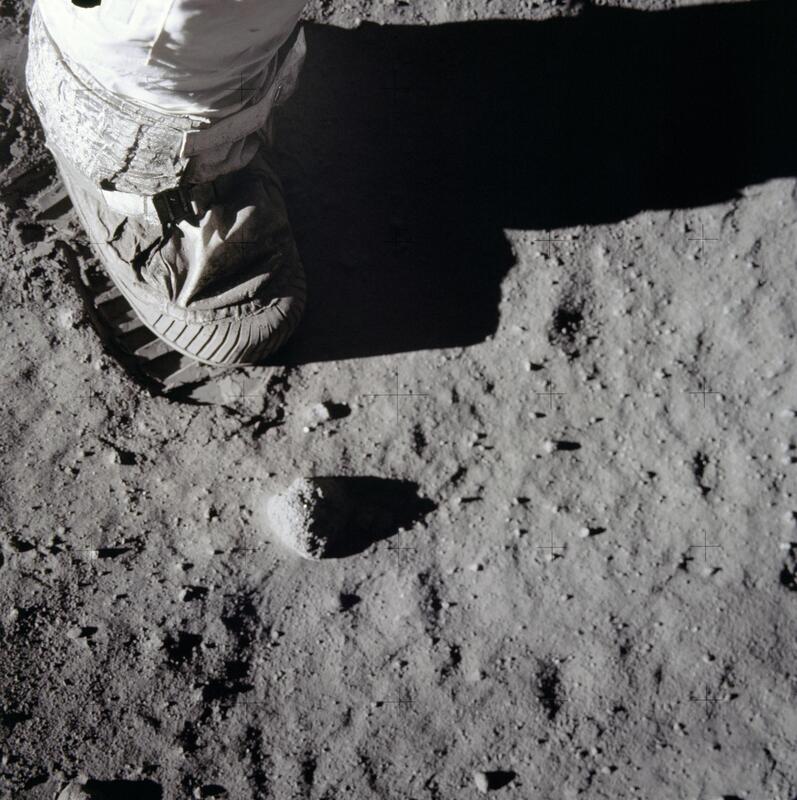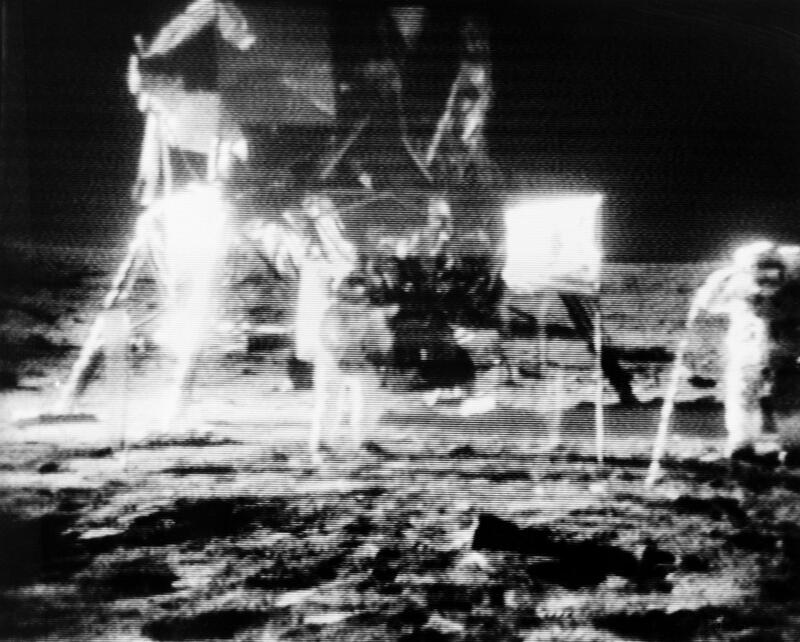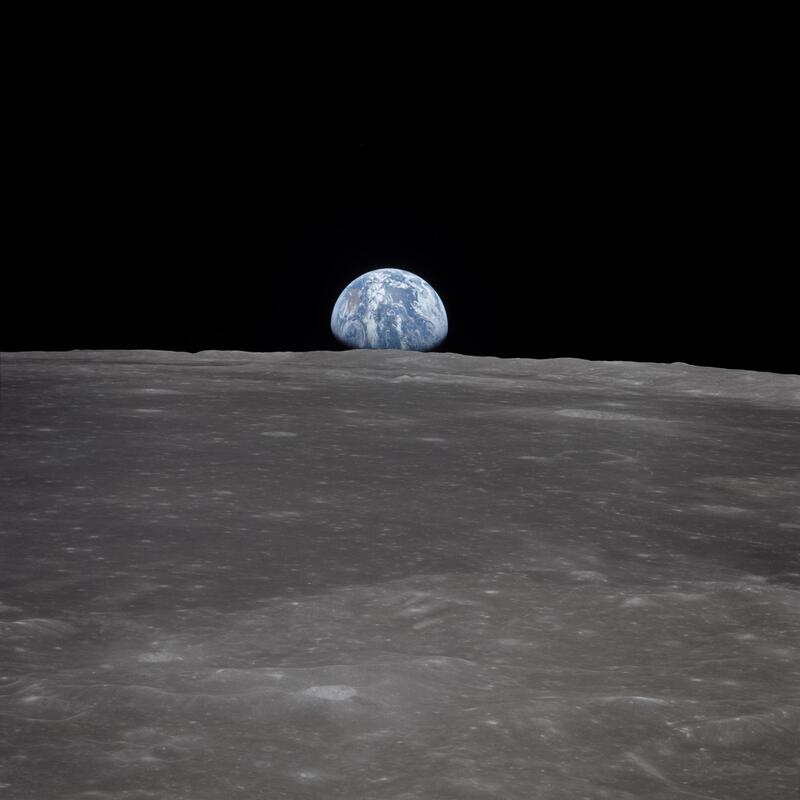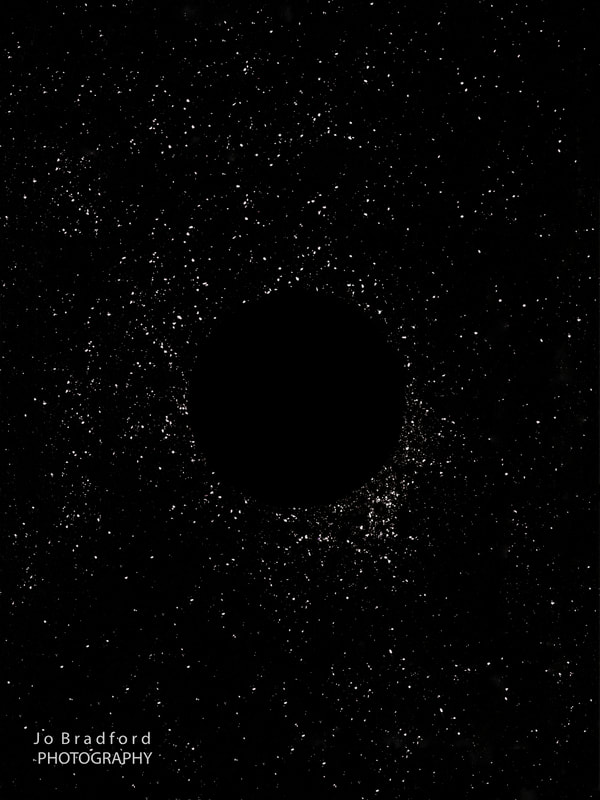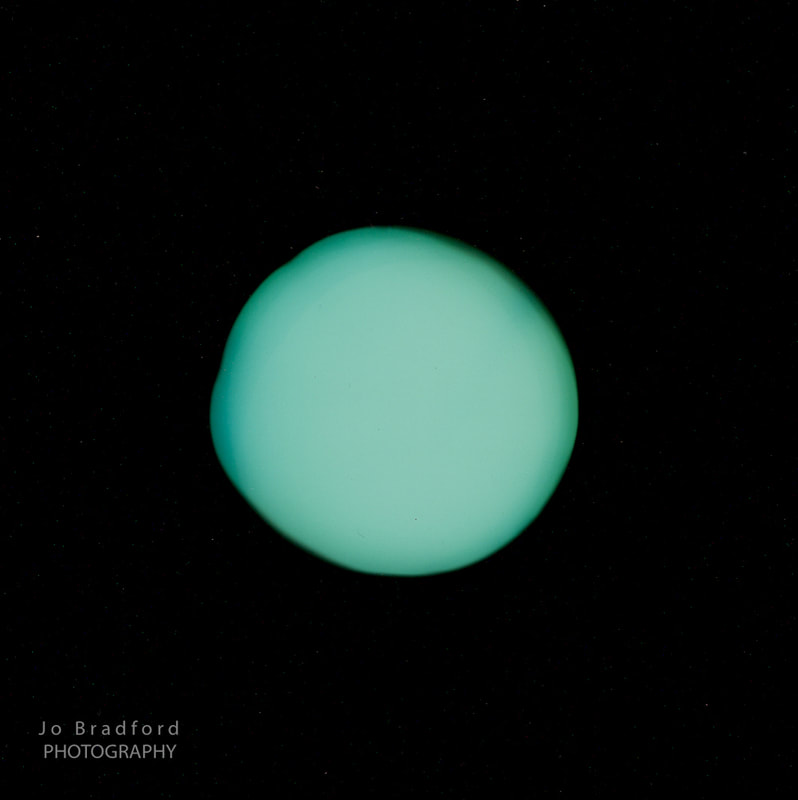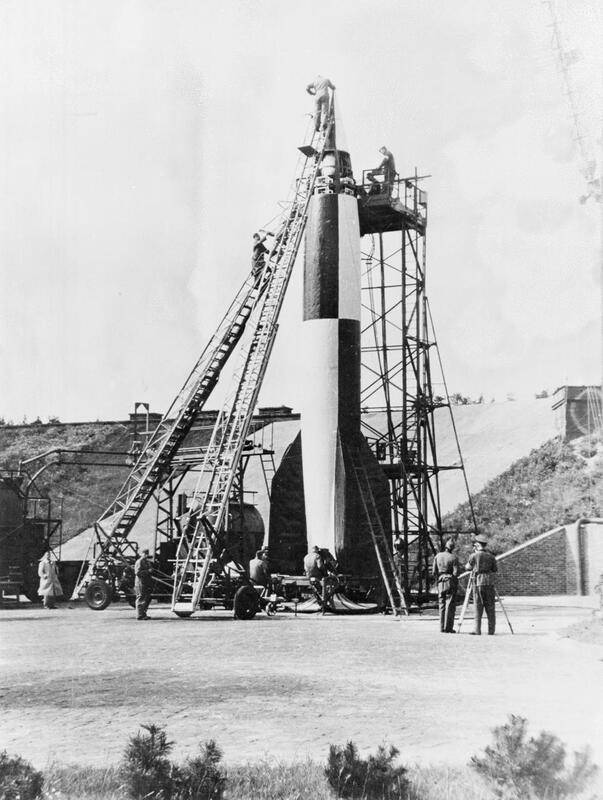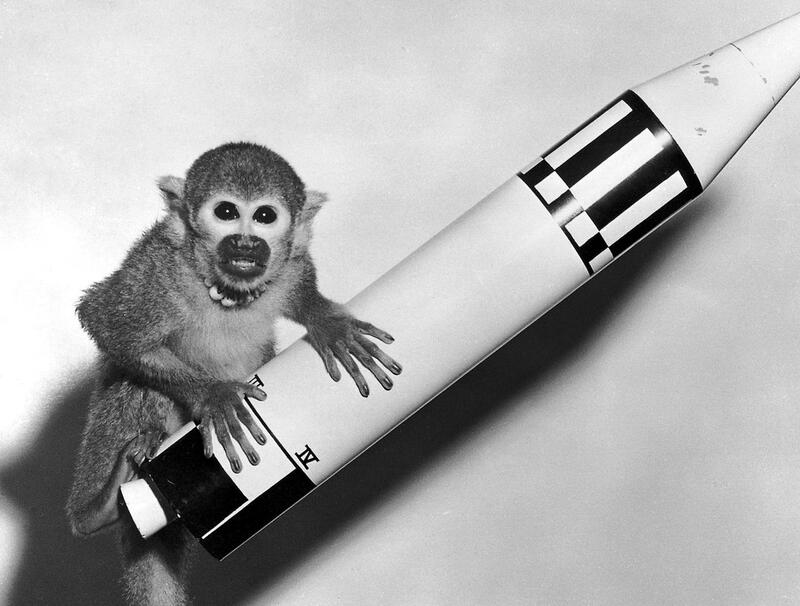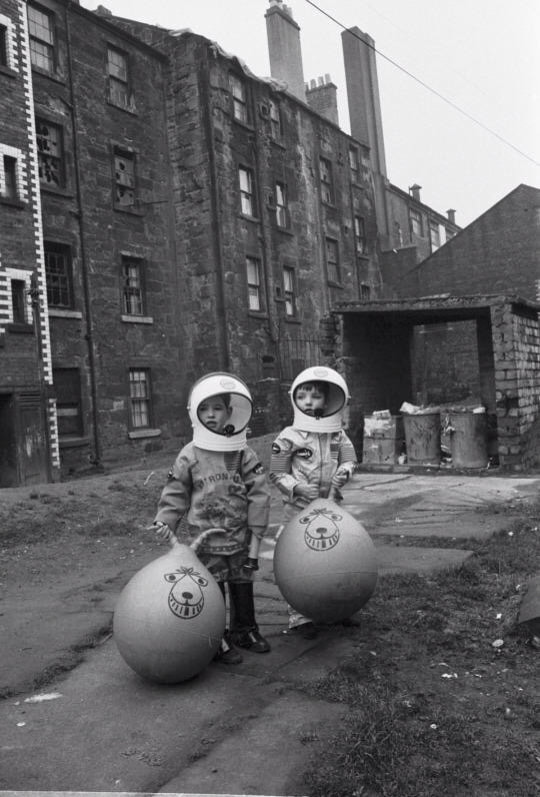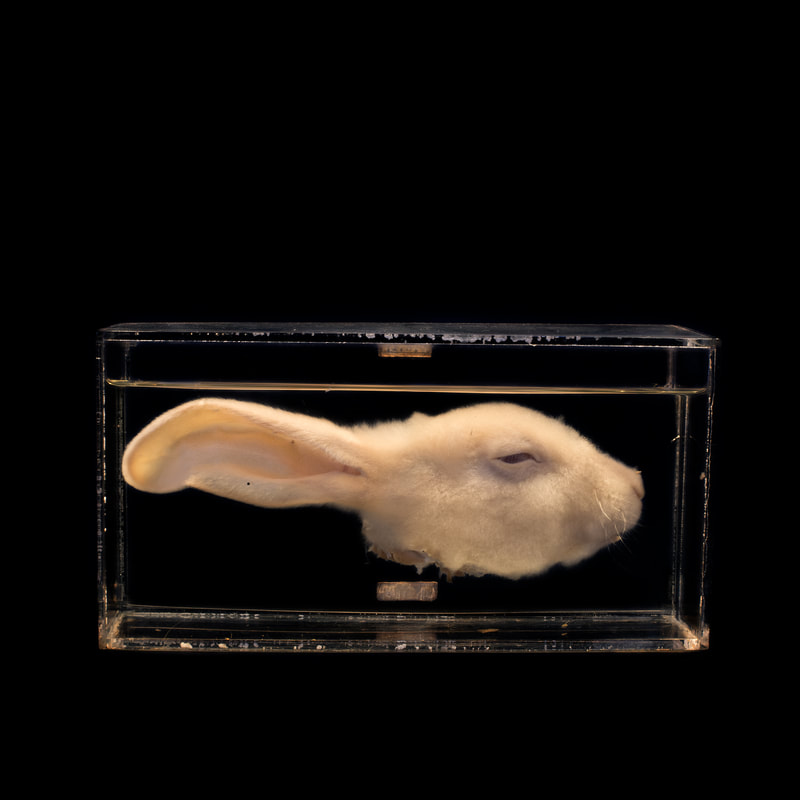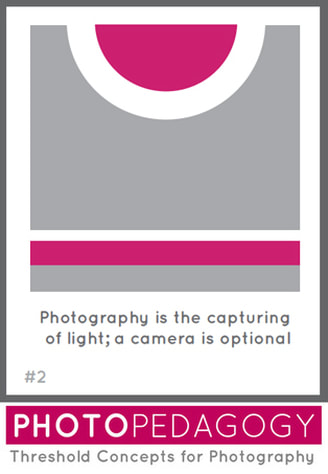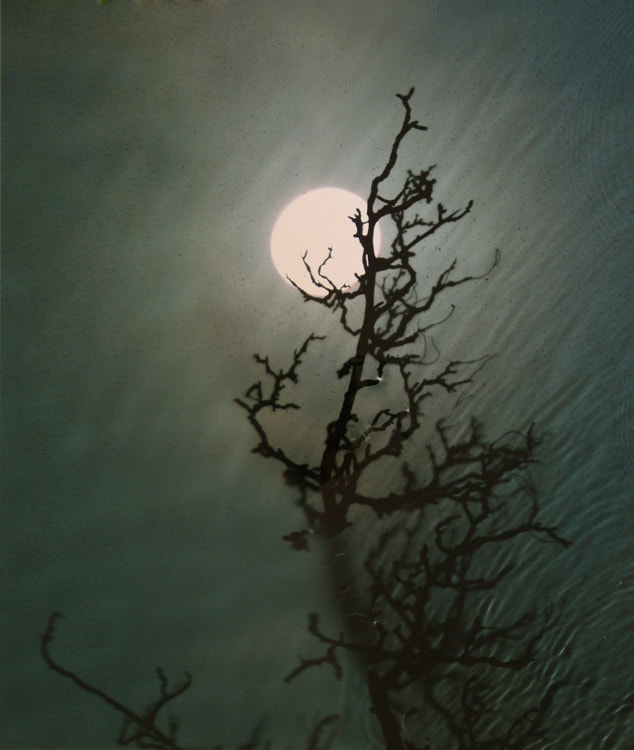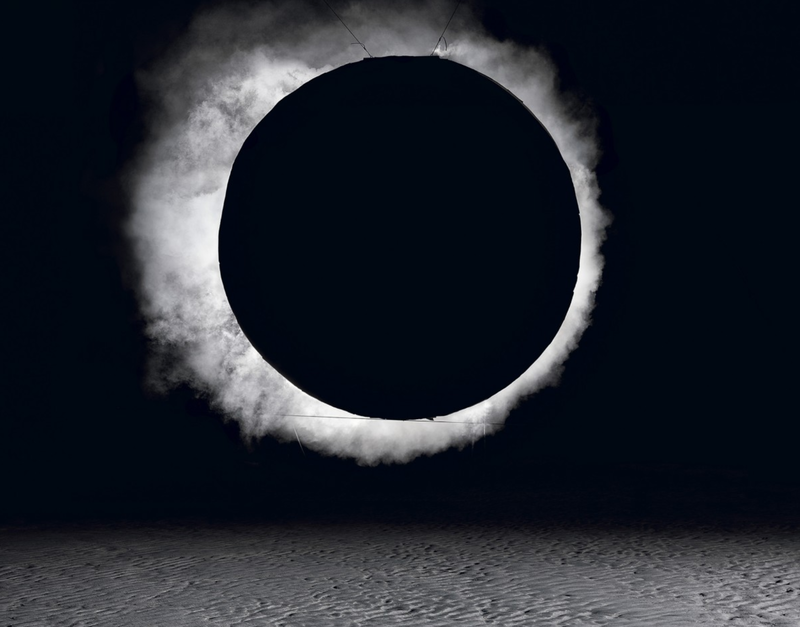|
These resources have been developed in partnership with The Royal Photographic Society (RPS) in support of Space Steps; The Moon and Beyond, on display at RPS Bristol between 5 July - 29 September 2019. The resources have been devised for KS3-5 students, but are adaptable for younger years. A visit to the exhibition would be highly beneficial but is not essential to explore these thought-provoking themes.
The Royal Photographic Society exists to educate members of the public by increasing their knowledge and understanding of Photography, and in doing so to promote the highest standards of achievement in Photography. Click here to discover more. |
|
Teacher Resources
A summary of some of the key discussion points and classroom activities from this web resource is available to download here. | ||||||
Space Steps: The Moon and Beyond - an introduction to the exhibition
Space Steps: The Moon and Beyond celebrates the 50th anniversary of the Apollo 11 moon landing on 20 July 1969. The exhibition traces the story of the earlier Mercury and Gemini space missions and the Apollo programme up to 1969, also paying tribute to the crucial role that women played in the Apollo space programme. A contemporary perspective on space exploration is supplied by Monica Alcazar-Duarte with Ascension, an interactive installation in which the artist examines how European space scientists are engaging in a new 'space race'.
Also on display are two very rare cameras associated with the historic moon landings. Visitors will be able to see up close one of the original Hasselblad cameras used by the Apollo astronauts during their training programme.
Also on display are two very rare cameras associated with the historic moon landings. Visitors will be able to see up close one of the original Hasselblad cameras used by the Apollo astronauts during their training programme.
Many years ago the great British explorer George Mallory, who was to die on Mount Everest, was asked why did he want to climb it. He said, "Because it is there." Well, space is there, and we're going to climb it, and the moon and the planets are there, and new hopes for knowledge and peace are there. And, therefore, as we set sail we ask God's blessing on the most hazardous and dangerous and greatest adventure on which man has ever embarked.
-- John F. Kennedy, September 12, 1962
|
|
Almost as soon as photography was presented as a new technology to the public in 1839, amateur and professional scientists began to explore its potential for capturing detailed images of the Moon. Eventually, Science Fiction, became science fact. The dream of landing a man on the Moon was finally realised in 1969.
For discussion
|
Part 1: Space Steps - How do we see the world?
Seeing our planet on which we pursue our increasingly precarious existence is only possible from outer space or by looking at documentary images. The RPS exhibition, Space Steps, contains iconic photographs captured by astronauts during the Apollo 11 mission to the Moon. These include some of the first pictures of the Earth from space. Photographs can reveal sights that are unfamiliar to most of us and sometimes disturb our sense of what we think is true. Viewing the pictures in this exhibition might help you to feel some of the excitement, wonder and awe experienced by the astronauts who took them, and the general public who saw them for the first time, 50 years ago. However, they have also become so well-known that it might be difficult to imagine the shock effect of these revolutionary views of a new world. Thanks to specially adapted, high quality cameras, the pictures of the Moon's surface are incredibly detailed. Due to photography's ability to capture the light bouncing off various surfaces, we almost feel as though we can reach out and grab a handful of moon dust.
Once they reached the Moon, the astronauts wandered like tourists, photographing "targets of opportunity" and whatever else they found interesting or dramatic. The most iconic images have become part of our collective human memory.
-- Excerpt from The Moon 1968-1972, 2016
|
|
Almost as soon as these images were shared with the public, various conspiracy theories began to surface, many claiming that the Moon landings had been faked. The photographic 'evidence' was called into question, raising interesting questions about the relationship between photography and the truth. One of the most profound impacts of these photographs, however, was the sense of a new perspective of the Earth from space. Sometimes referred to as 'the overview effect', seeing the Earth as a unified whole, a relatively small planet set against a vast universe, prompted a growth in environmental awareness. Set against the competitive political tensions of the Cold War, an alternative set of ideas urged a view of Earth as fragile, a home to be shared rather than a resource to be fought over.
Take a look at these famous images of the Earth from space: |
For discussion
- What are the similarities and differences between these views of the Earth? Which of them appears to be the most realistic portrait of our planet?
- How is our view of the Earth affected by changes in photographic technology?
- What changes have taken place in the way we live and our understanding of the Earth since 1969?
- What do you know about the future of space travel? Why is there a renewed interest in space travel today?
Threshold Concept #10: A reminder of things lost
|
Our Threshold Concepts for Photography aim to expose some of the 'big ideas' in photography education. Threshold Concept #10 reminds us that photographs are parcels of time. Very few of us have really seen the Earth from space but photographs of it create a kind of false memory. To what extent do we rely on photographs to do our remembering for us? It is 50 years since the Apollo 11 photographs were taken. The Earth is a radically different place today whereas the Moon, despite a few abandoned flags and Hasselblad cameras, remains relatively untouched by human interference. Much like a photograph, the Moon has preserved all traces of activity.
We can ‘recognise’ the Earth from Blue Marble, but only the three-man crew of Apollo 17 have ever actually seen this view, with the earth fully illuminated, and no one has seen it since 1972. The 2012 Blue Marble is made to seem as if it was taken from one place in space but it was not. It is accurate in each detail, but it is false in that it gives the illusion of having being taken from a specific place at one moment in time. Such ‘tiled rendering’ is a standard means of constructing digital imagery. It is a good metaphor for how the world is visualised today. We assemble a world from pieces, assuming that what we see is both coherent and equivalent to reality. Until we discover it is not. |
Wider reading
Relating to the Apollo 11 mission:
- Hasselblad and the Moon Landing, Deborah Ireland, 2018
- A Man on the Moon: The Voyages of the Apollo Astronauts, Andrew Chaikin, 2018
- Moon Shot: The Inside Story of America's Apollo Moon Landings, by Jay Barbree, Alan Shepard, Deke Slayton, Howard Benedict, Neil Armstrong, 2011
- How to photograph the Moon (Royal Museums Greenwich)
- To Capture the Moon: Warren de la Rue's Moon Camera (History of Science Museum, University of Oxford)
Activities
- Imagine the Moonscape. Before photographic technology was sophisticated enough to capture accurate images of the Moon's surface, astronomers and artists resorted to various ingenious strategies to explain scientific observations. The following images by James Nasmyth from his book The Moon: Considered as a Planet, a World, and a Satellite, from 1885, are great examples. Nasmyth's detailed studies of wrinkled surfaces and the creation of plaster models helped readers understand what photography could not yet capture. Take a sequence of photographs of objects and surfaces that suggest the landscape of the Moon. Think carefully about lighting, proximity, viewpoint and focus. How convincing can you make your own moonscapes?
- Plan and execute a journey to a mysterious location. Conduct detailed research and keep meticulous notes. Use available technologies to discover as much about this place as possible before you begin your journey. Collect images, map coordinates, read any existing literature. Take lots of photos of your preparations. What will you wear? What equipment will you take with you? Document your journey with photographs and notes about your mode(s) of transport, how you feel about each leg of the journey, what you anticipate about the destination and how you feel about home. When you reach your destination, take a photograph looking back. What does home look like from this new place? You may decide to present your notes, archival material and photographs in the form of a zine, book or installation.
- Photograph a featureless landscape. It might be a field, a beach or school playground. Take images of this relatively open space from extremely close up. Get on your hands and knees. Select the macro setting on your camera (if there is one). Explore this space as if you were a scientist gathering evidence. What materials can you find on the surface? You may decide to gather samples (like Gabriel Orozco), photographing them on location and back at your 'studio'.
- Create your own visual time capsule. Inspired by artist Trevor Paglen, select and/or create a series of pictures that might help to explain our species to a distant and unknown civilisation. This might be more fun if you limit the size of your collection to just 10 or 20 images. What does it mean to be human? How many of your own images will you include in the final selection?
- Fly to the Moon and back. Download Google Earth Pro for your desktop. Launch and switch to Moon view. Here's a guide to some of the features. By selecting some of the options in the menu on the left hand side of the application, you can visit sites like the Apollo 11 landing, view videos, hear audio and zoom into panoramic pictures taken by astronauts. You could screenshot some of these views to create your own Moon photo album.
A sprinkling of space dust. Artist Jo Bradford makes images using camera-less processes such as luminograms and photograms. She is interested in creating alternative versions of authentic space images - and has done this using authentic space matter such as meteorite fragments and space dust. These fragments are placed onto light sensitive paper, with several exposures then made, one for each colour. The space-dust blocks light to create the appearance of stars in distant galaxies. How might you experiment with camera-less techniques to create alternative space-inspired images? If you have access to a basic darkroom set-up then photograms might be a playful starting point. Alternatively, cyanotypes can be an accessible option for creating experimental prints using sunlight. You can find out more about this process here or buy pre-prepared cyanotype paper online from various craft and photographic suppliers. What unexpected materials or everyday objects might you use to produce experimental space-inspired images?
Related PhotoPedagogy resources:
|
The Surface of Things The astronauts who landed on the Moon in 1969 paid very close attention to the extraordinary landscape beneath their feet. They also documented the machinery they used, the lunar module, and their own clothing, all captured in the strange lunar light reflecting off the Moon's surface. How might you photograph respond the surface of things in your section of planet Earth? |
|
Typologies Photography has been used by both scientists and artists to classify, organise and present particular phenomenon in museum-like displays that encourage the viewer to analyse, compare and assess aspects of the world around us. The process involves gathering comparable photographic 'evidence' of people, objects or places. How might you create a typological study of something that interests you? |
|
Screenshots The technique of appropriation using screenshots can be used creatively to re-present visual material. A screenshot enables the viewer to construct their own narrative from a particular source. We might notice and crop out unusual details, zoom in to a particular scene or capture elements of multimedia or online presentation tools. How might you present a virtual journey to the Moon? |
Part 2: Space Steps - Worlds Apart
When I grow up I want to be an astronaut. What is it about the moon that is so captivating to us all? The moon is 384,400 km away and (to date) only 12 people have ever physically set foot upon its surface, yet our connections are deep-rooted and ever-growing. Humankind’s history upon the earth is entwined with a lunar fascination, and this is evident across all cultures, not least within the stories that we tell, and the art and discoveries we choose to make.
...her power to enamour, to mortify, to invest with beauty, to render insane, to incite to and aid delinquency: the tranquil inscrutability of her visage: the terribility of her isolated dominant resplendent propinquity: her omens of tempest and of calm: the stimulation of her light, her motion and her presence: the admonition of her craters, her arid seas, her silence: her splendour, when visible: her attraction, when invisible.
--James Joyce, Ulysses
There are no known ancient, realistic depictions of the moon. Perhaps its reliable attendance in the sky was enough. Or perhaps early artist-recorders were wary of capturing something so mystical. Most likely, there were more pressing concerns, not least, survival, or failing that, acceptance into an afterlife. But early recordings of - and in response to - the moon still tell of its great significance and allure. Some of the earliest marks made by man, 15,000 years ago within the Lascaux Caves, depict the lunar cycle. These recordings of nature’s rhythms were potentially critical for hunting or procreation; in Ancient Egyptian iconography, the Moon is typically found balancing on the head of the moon-god Khonsu, instrumental in the creation of all life; while mythological stories and ancient religions heralded lunar deities, such as Chandra, within Hinduism, whose name literally means the "Moon".
As civilisation rose (and fell) the moon has remained steadfast - it's even there now, outside my window as I write, circling, still bearing witness.
As civilisation rose (and fell) the moon has remained steadfast - it's even there now, outside my window as I write, circling, still bearing witness.
Activities
The surface of the Moon is not smooth, uniform, and precisely spherical as a great number of philosophers believe it to be, but is uneven, rough, and full of cavities and prominences, being not unlike the face of the Earth, relieved by chains of mountains and deep valleys. |
|
The earliest known accurate portrayal of the moon - preceding the invention of the telescope, and Galileo's subsequent studies (above) - emerged in the early 15th Century, a feature of a crucifixion painting by Flemish artist, Jan Van Eyk. The artist paid close attention to its light and surface qualities, possibly as a test of his own observation and technical skill. But as with all encounters with the moon, whether real or illustrated, there is scope for the mind to wonder and wander. Symbolism abounds, and within this deathly scene Van Eyk’s partly obscured moon is certainly skull-like in shape, tone and relative scale.
The invention of the telescope did mark a shift in how scientists and artists regarded the moon, and also a rise in speculation of the possibilities of life upon it. But new misinterpretations and presumptions also emerged, perhaps best evident in the mapping and naming of territories, where newly revealed darker parts of the surface were mistaken for water, and distinguished with terms such as mare (sea), oceanus (ocean), sinus (bay) and lacks (lake). Ambiguities and mysteries inevitably appeal to creative minds. It is little wonder that throughout the centuries (and prior to the invention of the camera) artists continued to respond to the moon. As a result - from Joseph of Derby's reverence to science; to the Romantic artists poetic ideals; to Van Gogh's troubled starry night - the moon has acted as a blank-canvas satellite, marking our days and reflecting back our histories. |
Threshold Concept #7: Context is everything
|
Artworks, as with photographs, are polyvalent - their meanings are hard to pin down and one photograph can mean many different things to different people. Threshold Concept #7 reminds us of this (as it does at ArtPedagogy.com, our sister resource). As a result, when considering the various ways in which the moon has been depicted throughout history - be it by artist, photographer, scientist or philosopher - it is important to consider the many contexts at play.
Here are a few questions you might ask:
|
Space travel is unique in its capacity to light up the imaginations of young children and also stimulate the wisest of scientists, mathematicians and philosophers. It provides us with both playful adventures and seemingly impossible problems. Ask a child, artist or scientist to build a rocket and it is quite likely you will be met with equal enthusiasm. But the results, even if visually similar (influenced by established images, expectations, knowledge and so on), would be worlds apart. Literally, if it ever came to test flights.
Activities
Consider the following statements and idioms:
Consider the materials and techniques you might use, for example, a singular staged image, a photographic or mixed media collage, a short animation or film. How might your response be revealed via interactions such as opening, folding, pulling out or popping-up? Is it possible to record accompanying sounds, or to present your response in an alternative, unusual location?
- The cow jumped over the moon
- The wolf howled at the moon
- The man in the moon
- Over the moon
- Once in a blue moon
Consider the materials and techniques you might use, for example, a singular staged image, a photographic or mixed media collage, a short animation or film. How might your response be revealed via interactions such as opening, folding, pulling out or popping-up? Is it possible to record accompanying sounds, or to present your response in an alternative, unusual location?
Ascension - by Monica Alcazar-Duarte
In the gap between the Earth and the moon, Artists are particularly well-placed - not everyone moves so fluidly between fiction and fact, play and problem-solving; mischievous enquiry and radical intent. On the surface, space travel might present itself as a uniting adventure, but when it comes to taking off – to literally putting human, dog or machine in space – the challenges are numerous, and often highly contentious. Space travel requires huge investments, financially, but also of human energies and natural resources. The opportunity costs can be high, as are the potential casualties. Human lives, the environment, and political relationships can all pay a price for space exploration. Contemporary artists are as likely to be drawn to these hard-edged themes as artists before were drawn to the mystical and symbolic.
Ascension is an interactive installation by Monica Alcazar-Duarte that features in Space Steps: The Moon and Beyond. The work explores how space scientists in facilities across Europe are engaging in a new space race. The title of the work not only refers to our humankind aspirations of rising upwards - be it physically to encounter new worlds, or in a more spiritual sense - but also refers to Ascension Island which has become somewhat of a curiosity due to its history as an artificial environment. By taking these disconnected locations - Ascension Island and Space - Monica Alcazar-Duarte invites the viewer to make new and unexpected connections.
My work is focused on asking questions about the future, on subjects related to technology or science. [...] One of my main concerns is keeping alive a way of producing knowledge that connects disparate subjects, almost in the way encyclopedias do. I am interested in reminding an audience of these seemingly unrelated interconnections and how, when it all adds up, it produces a much more complex and alive way of understanding the world around us. |
Monica Alcazar-Duarte hopes to encourage others to adopt a more complex way of looking at space and its exploration; to look beyond the headlines of discovery and adventure and reflect upon other aspects such as the ethical, philosophical and ecological issues concerning space exploration.
For discussion
|
Wider reading
Moon: A Past and Future History, publication by Oliver Morton
Lunacy: how science fiction is powering the new moon rush, online article by Oliver Morton
The Moon: One of the earliest human symbols, online article by Kelly Grovier
Cosmic Perspectives, online article by Melanie King
Lunacy: how science fiction is powering the new moon rush, online article by Oliver Morton
The Moon: One of the earliest human symbols, online article by Kelly Grovier
Cosmic Perspectives, online article by Melanie King
Related PhotoPedagogy resources:
|
The Photograph as Evidence. Since its 'invention' in the 1830s, photographs have been used as sources of evidence. The direct (indexical) relationship between the sun's rays and the resulting image makes photographs seem reliable as sources of information. But how reliable are photographs, really? |
|
Believable Fictions The relationship between photographs and reality is complex. Photographs can appear to be copies (facsimiles) of the world. It is tempting to think of them as factual evidence that something happened or existed, but that is not always the case. This resource looks at ways artists have deliberately misled, playing upon our expectations of photography. |
Part 3: Space Steps - Ooh, what a little moonlight can do
It's no wonder that artists and photographers have been drawn to the magic and mystery of the Moon for centuries. Photographic technology has enabled new ways to engage with the Moon, its physical appearance and, especially, the quality of the light reflected from its surface. Melanie King, for example, explores our relationship to cosmic time, the Moon and the stars, using a variety of strategies.
In my practice I visit dark sky spaces around the world to capture light from distant stars directly onto photosensitive film. Within my series “Ancient Light” I am to capture light that has travelled thousands, if not millions of years, directly onto photosensitive film. I am thinking about the photon on its journey from A to B, emitted from a giant star, travelling through the seeming void of space and imbuing itself within the silver gelatin emulsion.
-- Melanie King, Cosmic Perspectives
Light is pure presence. Or so it seems to our perception. But the fact that light has a specific velocity, i.e., it is not everywhere simultaneously, contradicts direct experience—because we cannot see that the sun’s brilliance is eight minutes old when it arrives on earth, or that even pale moonshine requires a full 1.3 seconds before reaching the human retina. At the moment we look at them, the heavenly bodies are— depending on their distance from earth—already minutes, years or millions of years older than the presence of their image.
-- Cosmic Darkroom by Johan Österholm, Photographic Museum of Humanity, 2019
For discussion
- What are the similarities between the night sky and a photographic darkroom or camera?
- How does gazing into space alter our perception of time?
- What is special about Moonlight?
Threshold Concept #2: Photography is the capturing of lightPhotography depends on the availability of light but, not necessarily, a device like a camera to record it. Moonlight is a very particular kind of light, the reflection of the sun's rays onto the Earth. The Moon acts as a kind of mirror, light bouncing off its pale, dusty surface. Poets, like photographers, have been drawn to the ethereal qualities of Moonlight, attracted by its romance, sadness and strange, otherworldly beauty.
|
Take a look at the work of these artists who have explored the qualities of moonlight:
Activities
- A mirror image of the Moon. Photographing the Moon presents a range of technical challenges but also requires patience and a poetic sensibility. Instead of photographing it directly, why not experiment with capturing its reflection in a mirrored surface? If you can't wait for the Moon itself, what other objects might you use to suggest a lunar light?
- Make a photogram at night. Take inspiration from artists like Klea McKenna and attempt to make a photogram using only the light of the Moon.
- Create a Solargraph. If you have plenty of time to spare (and lots of patience), experiment with creating a sixth month long exposure of the sun and moon travelling across the sky. Here's a great How To video from photographer Justin Quinell.
- Take a night walk, illuminated by the Moon. Choose a night when the Moon is at its brightest. If you live in a city, the Moonlight will be difficult to distinguish from the light leaking from other sources. In the countryside, the Moonlight may be your only source of light. Using a tripod to steady your camera, select a range of long shutter speeds to capture the ambient light of the Moon as it falls on various surfaces. For safety, make sure you walk with a friend or family member.
If you have any queries regarding these resources, or if you would like to share any student work produced in response to these themes, you can contact PhotoPedagogy here.
Additional links
The Royal Photographic Society
The Moonlight exhibition at the Hasselblad Foundation
The Moon exhibition at Royal Museums Greenwich
Additional links
The Royal Photographic Society
The Moonlight exhibition at the Hasselblad Foundation
The Moon exhibition at Royal Museums Greenwich



